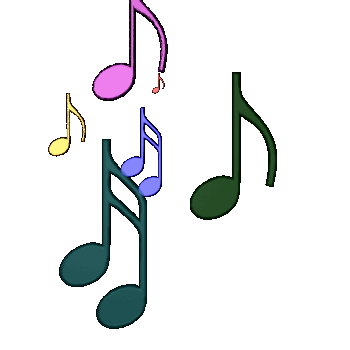July 13 is Barbershop Music Appreciation Day, which was created in 2005 by Sweet Adelines International, "a worldwide organization of women singers committed to advancing the musical art form of barbershop harmony." It was started to mark the 60th anniversary of the founding of their organization. To appreciate barbershop music begins with first understanding its history.A Bit of Barbershop History
 There was a time when harmony thrived in a barbershop as celebrated back in April on Barbershop Quartet Day. The harmonizing came about while men waited their turn for a haircut. That's one way to pass the time and prevent boredom! At least it's the way it was in the last half of the 19th century. Not so much today since Barbershops are almost a thing of the past. Men now go to 'salons' much the same as their counterpart, women and women perform barbershop music much the same as their counterpart, men.
There was a time when harmony thrived in a barbershop as celebrated back in April on Barbershop Quartet Day. The harmonizing came about while men waited their turn for a haircut. That's one way to pass the time and prevent boredom! At least it's the way it was in the last half of the 19th century. Not so much today since Barbershops are almost a thing of the past. Men now go to 'salons' much the same as their counterpart, women and women perform barbershop music much the same as their counterpart, men.The 1880s to the 1940s were the golden age for the barbershops. They actually rivaled saloons in popularity. Main difference...men left there sober with the only cut possibly a slight 'nick' from a straight razor! Even that didn't happen very often for the barbers were skilled tradesmen! With the atmosphere of the barbershop being rendered with an artistic flourish, it is no wonder the Barbershop Quartet evolved. But, why this particular style of music? Many people are not aware that the barbershop quartets were initially begun by African American men socializing in barbershops. By the turn of the century, barbershop quartets consisted mostly of white males.
The "barbershop" style of music is first associated with black southern quartets of the 1870s, such as The American Four and The Hamtown Students. The African influence is particularly notable in the improvisational nature of the harmonization, and the flexing of melody to produce harmonies in "swipes" and "snakes." Black quartets "cracking a chord" were commonplace at places like Joe Sarpy's Cut Rate Shaving Parlor in St. Louis, or in Jacksonville, Florida, where, black historian James Weldon Johnson writes, "every barbershop seemed to have its own quartet." The first written use of the word "barbershop" when referring to harmonizing came in 1910, with the publication of the song, "Play That Barbershop Chord"‹evidence that the term was in common parlance by that time.
Source: The Origins of Barbershop Harmony
There is a great appreciation for Barbershop music, especially since it is a cappella. Its singing is technically without instrumental accompaniment but some groups use their voices to emulate instruments. Traditional a cappella focuses on harmonizing with its distinctive four part harmony still being made up of the tenor, lead, baritone and bass. The word "barbershop" has been used to encompass both male and female quartets singing in the barbershop style.
In July 1943, as a result of the American Federation of Musicians boycott of US recording studios, the a cappella vocal group The Song Spinners had a best-seller with "Comin' In On A Wing And A Prayer".
This song was extremely popular in the 1940s, during World War II. It managed to stay on the charts for quite some time and sold well over a million copies.
Perhaps never before and never since has this country been so united and supportive of our fighting men and women than during World War II. There were many sacrifices made not only by our troops overseas but by those back at home. People came together and supported the war effort. There was gas rationing, food rationing, etc. and no one complained. They stood behind our government and our troops because they knew to lose the war was to lose our freedom and way of life.
Source: Bopper Bob Hennessey
And the music goes on beating to the rhythm of the changing times...



No comments:
Post a Comment